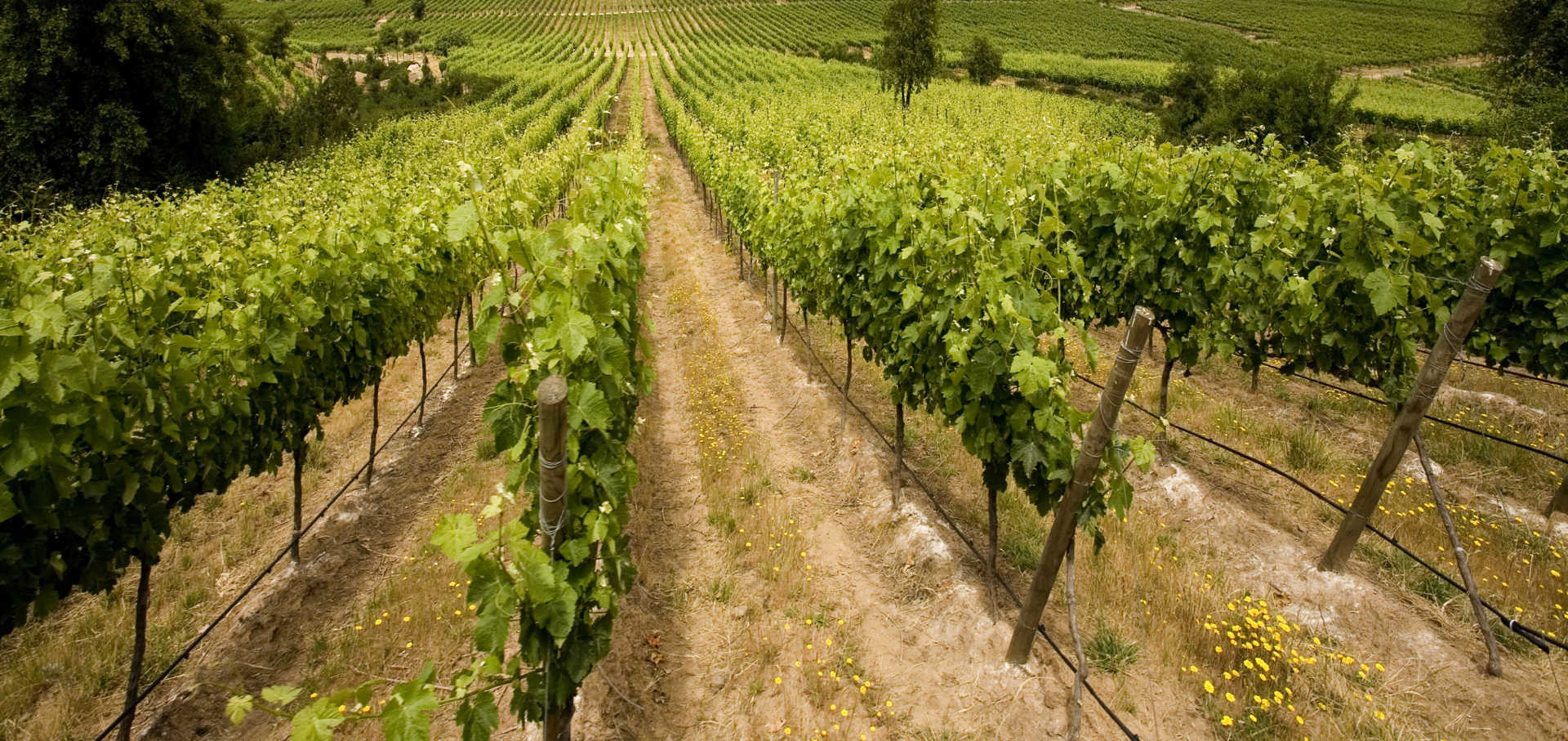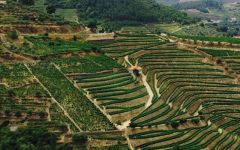Wine & Soul Pintas 2017
-
Wine
Spectator -
Robert
Parker -
Wine &
Spirits -
James
Suckling



Product Details
Your Rating
Somm Note
Winemaker Notes
Full-bodied and deep, Pintas shows spicy and floral aromas and flavors of blackberry and dark chocolate. Ripe, round, and balanced with notable acidity, it has fine tannins and a long, persistent finish.
Professional Ratings
-
Wine Spectator
A generous, harmonious red, boasting steeped cherry, blackberry coulis and cedar flavors that meld into violet, black tea and graphite accents. Details of olive, wild herb and ripe currant play into the finish. Powerful and refined. Best from 2022 through 2035.
-
Robert Parker's Wine Advocate
The 2017 Pintas is a field blend from old vines (not quite 90 years) aged for 20 months in 30% new French oak. It comes in at 14.5% alcohol. This seemed surprisingly accessible and elegant for this vintage when I first saw it as a tank sample in Porto last June. It was, however, a bit reticent. I expected more. It is now showing exactly that. I'm still not convinced it is quite as great as the winery thinks, but it is awfully fine. It has an extra layer of depth over the 2016, a little more power and even more concentration of fruit—in that subtle and elegant style the winery has; it's never jammy. It is still remarkably unevolved and in need of some time to show the finesse and harmony it will one day have, but it is surprisingly approachable. When this rounds into something more like peak form in the late 2020s, I suspect many unfamiliar to Portugal will pick up a glass and think it is something far more famous. Some six hours later (re-corked, not decanted), it was arguably better. At the moment, this still is not quite all the way there. If it is all about potential, it has a lot of it.
Rating: 95+ -
Wine & Spirits
Sandra Tavares and Jorge Serôdio Borges grow the fruit for this wine at a vineyard in Vale Mendiz, an 89-year-old, mixed-vine planting that has built a legend for the wine they’ve made in a ripe, extracted, ambitiously oaked style. So this 2017 comes as a surprise, no less luscious than a great Vale Mendiz wine might be, but distinctly elegant in its cool evocation of Douro schist. It feels brisk in its black-cherry flavors, super spicy as it tumbles into a crushed-rose fragrance at the end. There’s tension and motion in the wine, a great vintage of Pintas that should age for a decade or more.
-
James Suckling
A medium-to full-bodied red with juicy plums, blueberries, cloves and cedar. Ripe fruit, balanced by smooth, integrated tannins and a spicy finish. Give it a year or two to soften. Better after 2022.
Other Vintages
2021-
Wine
Spectator -
James
Suckling
-
Robert
Parker -
Wine
Spectator -
Wine
Enthusiast -
Wine &
Spirits
-
Robert
Parker -
Wine
Spectator -
Wine
Enthusiast -
James
Suckling -
Wine &
Spirits
-
Robert
Parker -
Wine
Enthusiast -
Wine
Spectator -
Wine &
Spirits
-
Wine
Spectator -
Robert
Parker
-
Robert
Parker -
Wine
Enthusiast -
Wine &
Spirits -
Wine
Spectator
-
Wine &
Spirits -
Wine
Enthusiast -
Robert
Parker -
Wine
Spectator
-
Wine
Enthusiast -
Robert
Parker -
Wine
Spectator
-
Wine
Enthusiast -
Wine
Spectator -
Robert
Parker






Located in the heart of the Douro Valley, Portugal’s best-known wine region, Wine & Soul spans several picturesque vineyards. This innovative yet rustic winery was founded nearly 10 years ago by Jorge Serôdio Borges and his wife Sandra Tavares da Silva, both of whom wished to channel their extensive experience into a winery that would showcase the traditional varieties and terroir of the Douro Valley on an international level. Initially, Wine & Soul consisted of a lone vineyard, Pintas, located in the Cima Corgo's prized Pinhão Valley. Throughout the years, it expanded to include additional properties, such as the magnificent Quinta da Manoella. Parcels of 80-year-old vines are tucked into terraces carved out by dynamite a century ago. Walls built from the displaced schist border the vines, preventing erosion and enhancing the idyllic landscape. Wine & Soul has received considerable critical praise for its character-driven wines, all of which represent the exceptional terroir of the Douro region. Natural farming is prioritized, and no chemical fertilizers, pesticides, or herbicides are used. Irrigation is minimal and performed only by hand, and indigenous yeasts are used for almost all fermentation. Organic certification by Sativa is pending. Due to the steep grade of the slopes and the narrow width of the terraces, all grapes must be picked by hand. The fruit is foot-trodden in granite lagares, which yields fine, silky tannins since the process is so gentle on the grapes. The wines are all aged in French barriques.

With hundreds of red grape varieties to choose from, winemakers have the freedom to create a virtually endless assortment of blended red wines. In many European regions, strict laws are in place determining the set of varieties that may be used, but in the New World, experimentation is permitted and encouraged resulting in a wide variety of red wine styles. Blending can be utilized to enhance balance or create complexity, lending different layers of flavors and aromas. For example, a red wine blend variety that creates a fruity and full-bodied wine would do well combined with one that is naturally high in acidity and tannins. Sometimes small amounts of a particular variety are added to boost color or aromatics. Blending can take place before or after fermentation, with the latter, more popular option giving more control to the winemaker over the final qualities of the wine.
How to Serve Red Wine
A common piece of advice is to serve red wine at “room temperature,” but this suggestion is imprecise. After all, room temperature in January is likely to be quite different than in August, even considering the possible effect of central heating and air conditioning systems. The proper temperature to aim for is 55° F to 60° F for lighter-bodied reds and 60° F to 65° F for fuller-bodied wines.
How Long Does Red Wine Last?
Once opened and re-corked, a bottle stored in a cool, dark environment (like your fridge) will stay fresh and nicely drinkable for a day or two. There are products available that can extend that period by a couple of days. As for unopened bottles, optimal storage means keeping them on their sides in a moderately humid environment at about 57° F. Red wines stored in this manner will stay good – and possibly improve – for anywhere from one year to multiple decades. Assessing how long to hold on to a bottle is a complicated science. If you are planning long-term storage of your reds, seek the advice of a wine professional.

The home of Port—perhaps the most internationally acclaimed beverage—the Douro region of Portugal is one of the world’s oldest delimited wine regions, established in 1756. The vineyards of the Douro, set on the slopes surrounding the Douro River (known as the Duero in Spain), are incredibly steep, necessitating the use of terracing and thus, manual vineyard management as well as harvesting. The Douro's best sites, rare outcroppings of Cambrian schist, are reserved for vineyards that yield high quality Port.
While more than 100 indigenous varieties are approved for wine production in the Douro, there are five primary grapes that make up most Port and the region's excellent, though less known, red table wines. Touriga Nacional is the finest of these, prized for its deep color, tannins and floral aromatics. Tinta Roriz (Spain's Tempranillo) adds bright acidity and red fruit flavors. Touriga Franca shows great persistence of fruit and Tinta Barroca helps round out the blend with its supple texture. Tinta Cão, a fine but low-yielding variety, is now rarely planted but still highly valued for its ability to produce excellent, complex wines.
White wines, generally crisp, mineral-driven blends of Arinto, Viosinho, Gouveio, Malvasia Fina and an assortment of other rare but local varieties, are produced in small quantities but worth noting.
With hot summers and cool, wet winters, the Duoro has a maritime climate.
